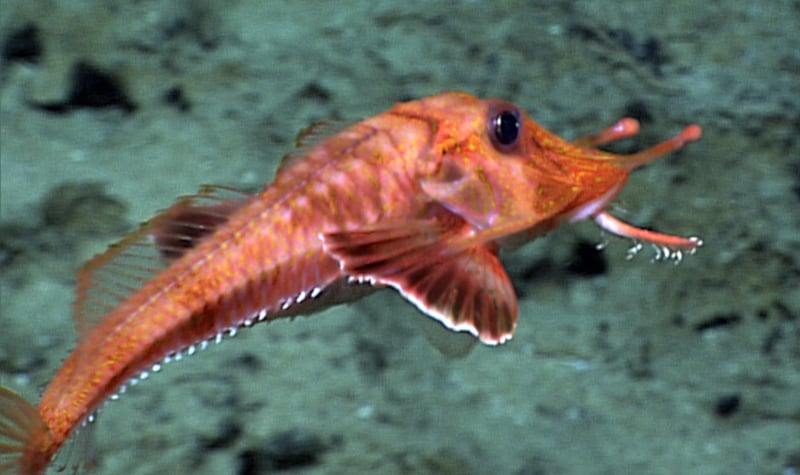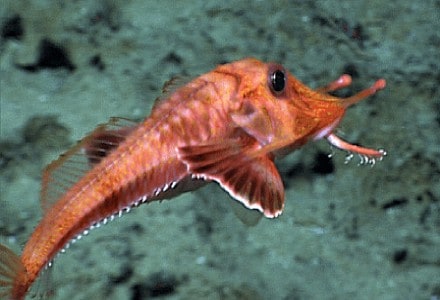
Armored Sea Robin Facts
- Firstly, the Armored Sea Robin is an incredible family of fish that, quite literally has natural armor. As a result of this remarkable trick of evolution, it would be quite imposing if it was larger.
- Further, the different species rarely draw the notice of man unless caught by trawling activities. The images used in this article were taken by various submersibles, at different times.
- The fish also resides at depths that humans generally cannot access. The exceptions to that would be the aforementioned submersible expeditions and, quite unfortunately, trawling.
- Finally, and not surprisingly, this reclusive creature bears a close relation to the scorpionfish. We know very little about its numbers, however. Therefore, the IUCN does not yet have a listing for it.
Related Articles
Photo Credit: NOAA Ocean Exploration & Research
CC License: https://bit.ly/3rRuiaZ
Armored Sea Robin Physical Description
Most notably, the Armored Sea Robin has a fierce and remarkable appearance. However, despite that, it remains a diminutive creature. In fact, none of the various species exceed 4.75 in (12 cm) in length.
Also, both the head and the underbelly of these fish stay quite flat. Meanwhile, the snout develops both broad and long. Additionally, the armor covering the head and snout ends in a long, pointed wing.
Furthermore, it also produces barbels below the lower jaw. The body typically has a dark red color, yet the fins show a translucent pink. Finally, the entire body has a covering of thick armor plates, as well as spines.
- Kingdom: Animalia
- Phylum: Chordata
- Class: Actinopterygii
- Order: Scorpaeniformes
- Family: Peristediidae
Photo Credit: NOAA Photo Library
CC License: https://bit.ly/3i9pL01
Armored Sea Robin Distribution, Habitat, and Ecology
First of all, the various species of Armored Sea Robin live throughout the world. However, the majority of these inhabit tropical waters. The most recently discovered species lives off the coast of Costa Rica.
Furthermore, the astonishing Armored Sea Robin lives as an entirely benthic species. As a result, the amazing fish lives exclusively on the ocean floor. This usually occurs at depths of 362 ft (110 m) or more.
In addition, it also has one other remarkable trait in addition to the armor that Nature has blessed it with. All known members of this group evolved as slow swimmers. Due to this, it prefers to glide along the ocean bottom.
Also, its diet consists primarily of annelid worms, small crustaceans, and occasionally small fish. Finally, scientists know virtually nothing about its life cycle or lifespan. That’s because Nature seems to like to keep her secrets.
Species Sharing Its Range
Minke Whale Jawfish Feather Starfish
Check out our other articles on 7 Extraordinary Types of Ant, Mountain Chicken, Amethyst Deceiver, Eastern Diamondback Rattlesnake, Goliath Beetle, European Honey Buzzard

